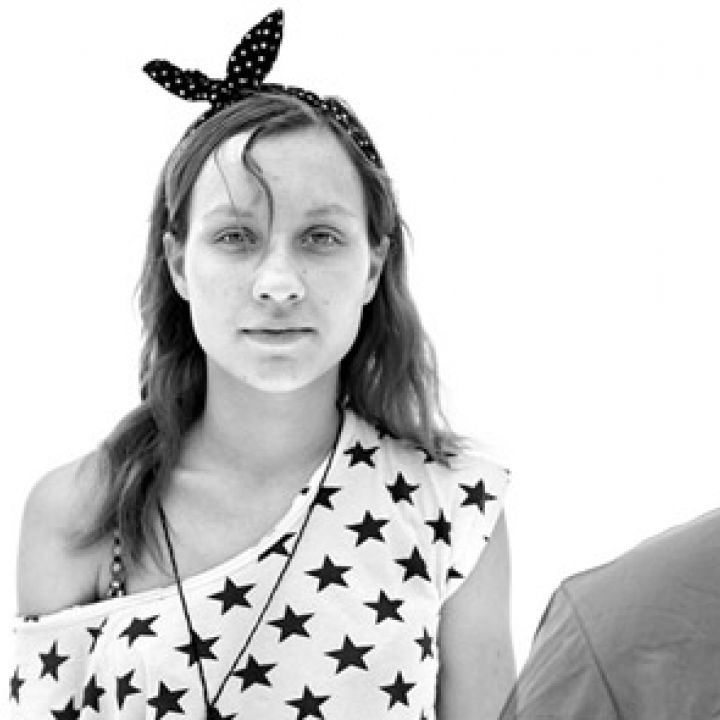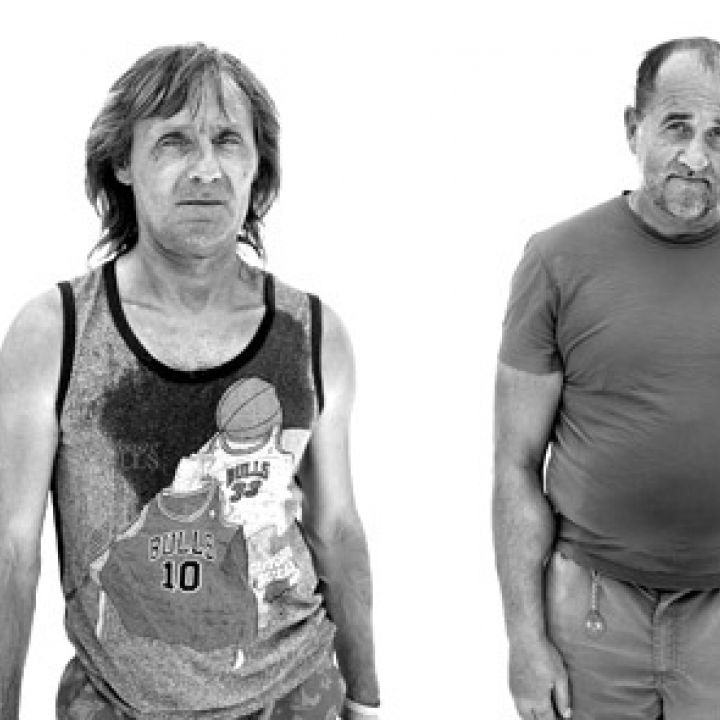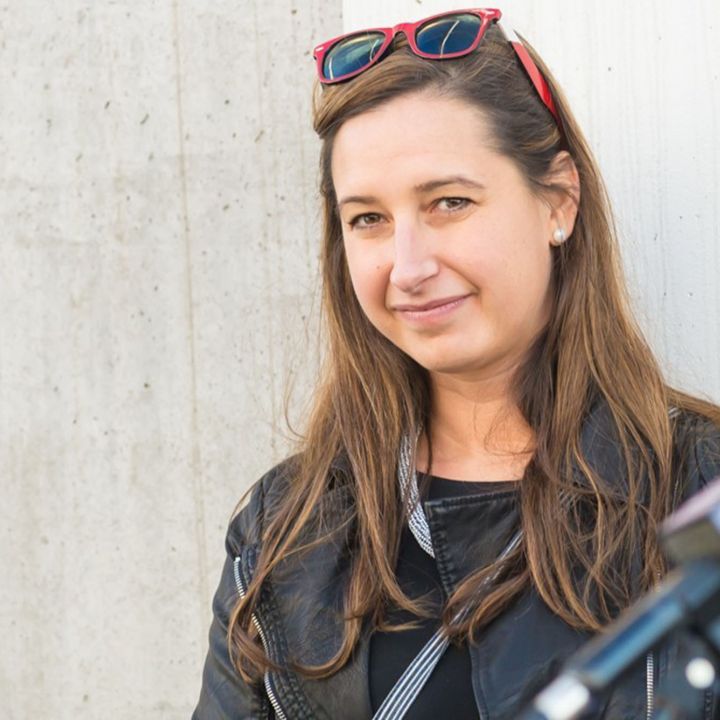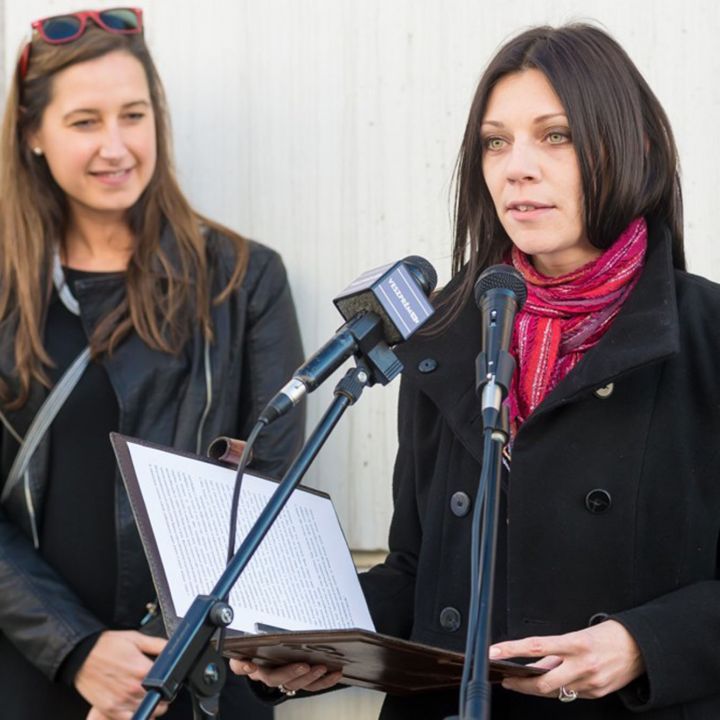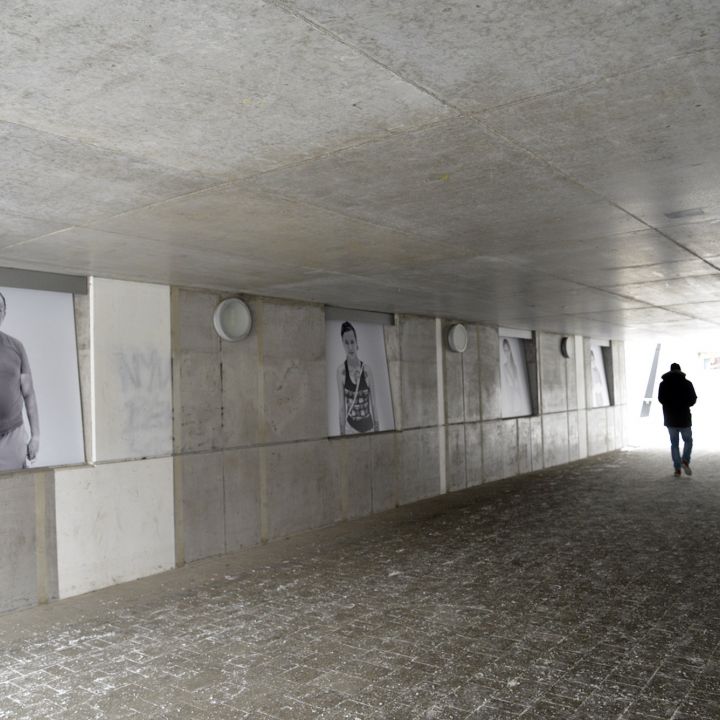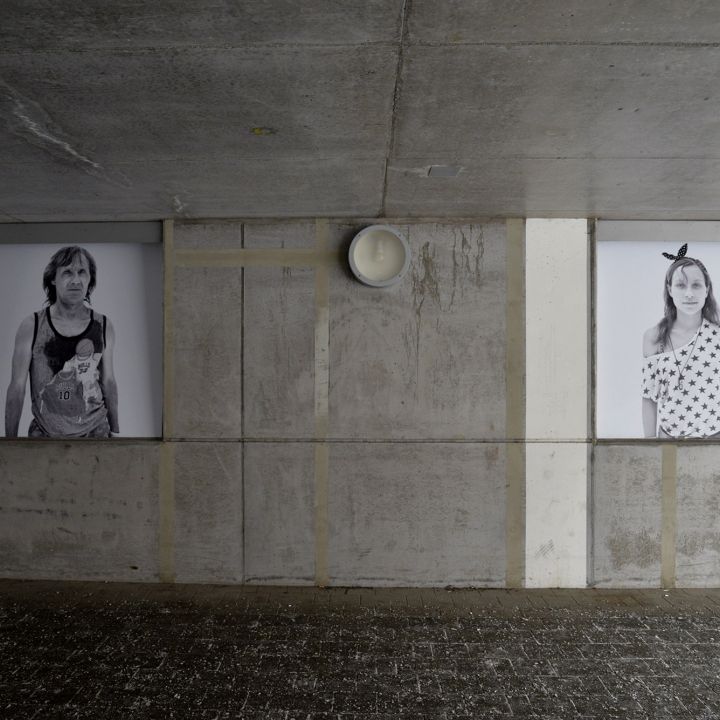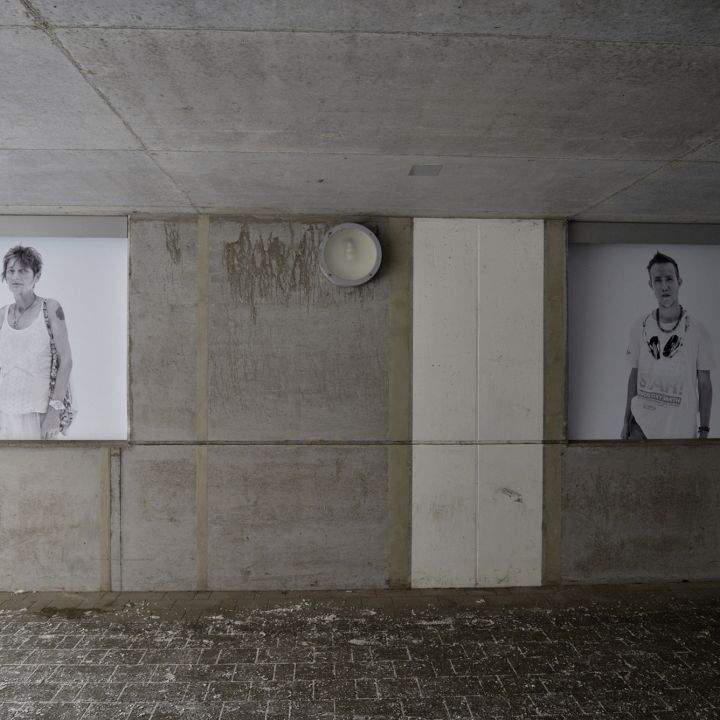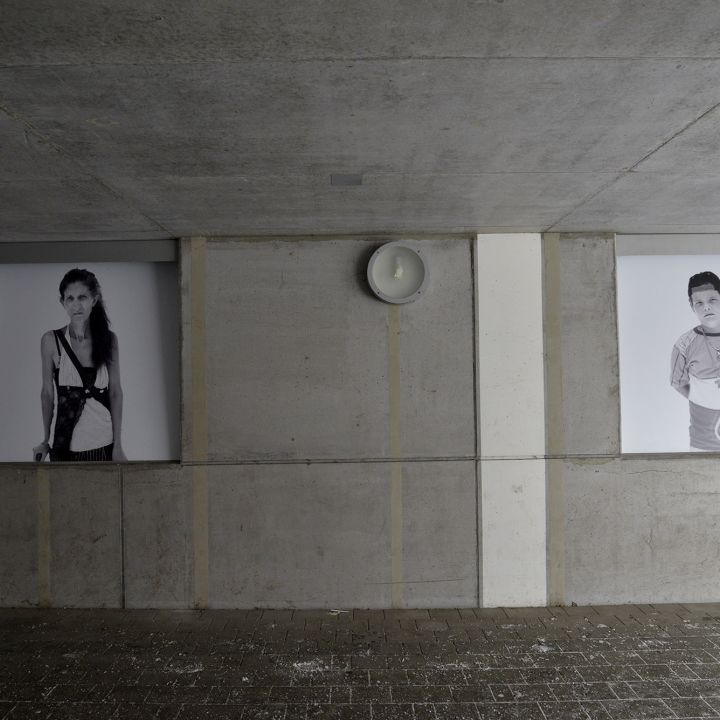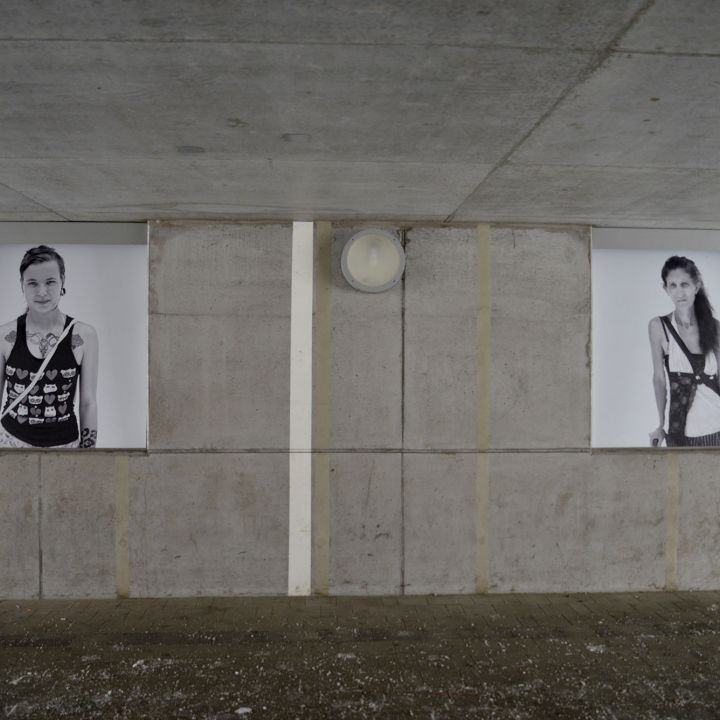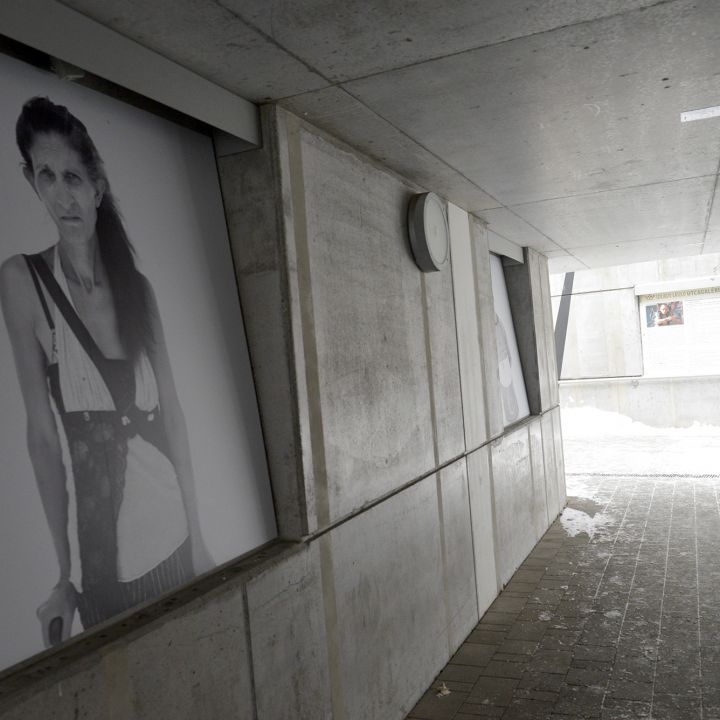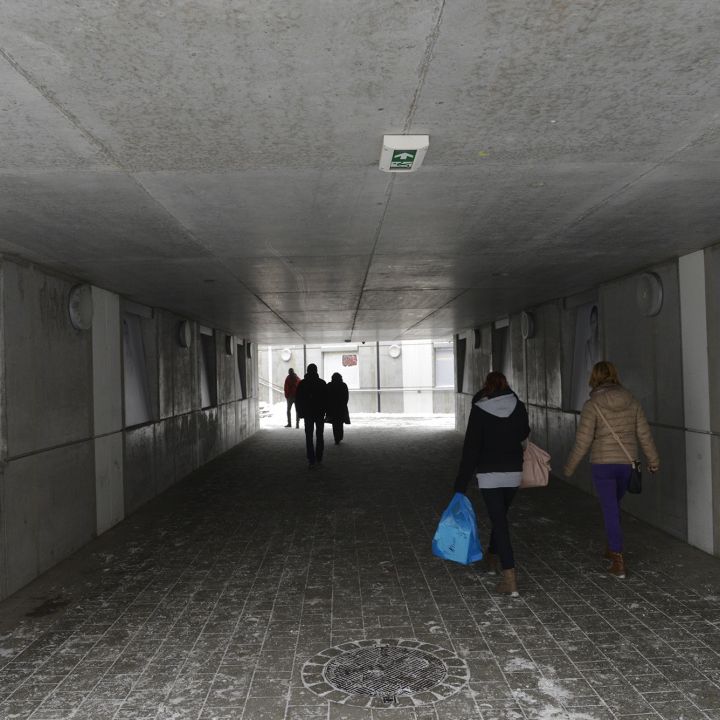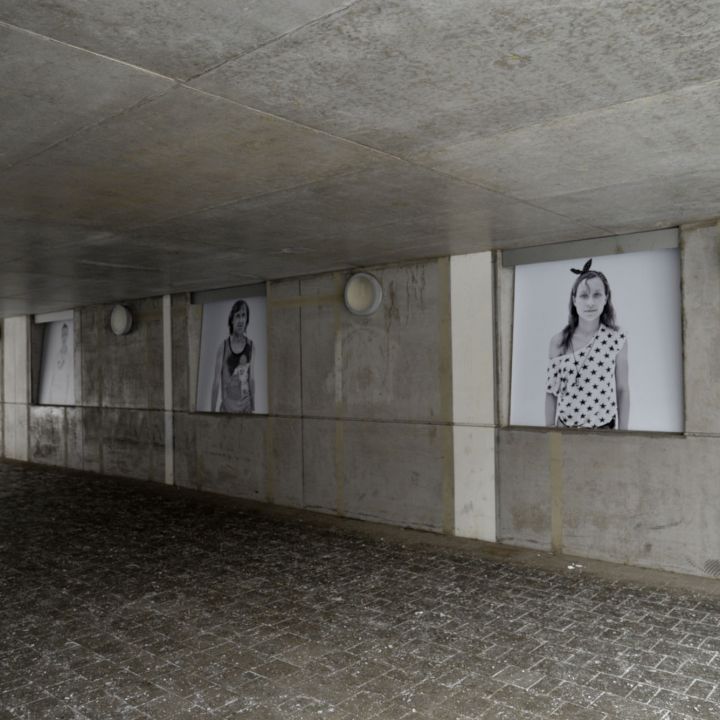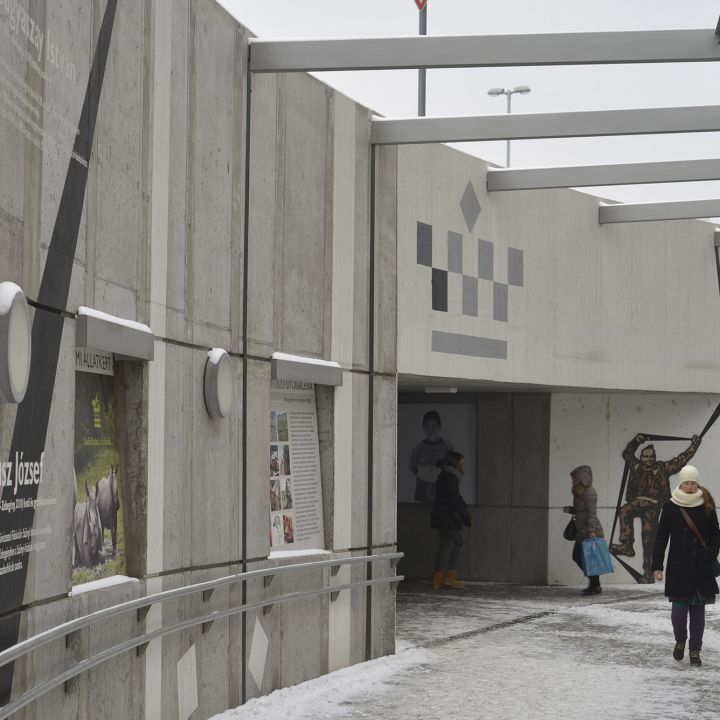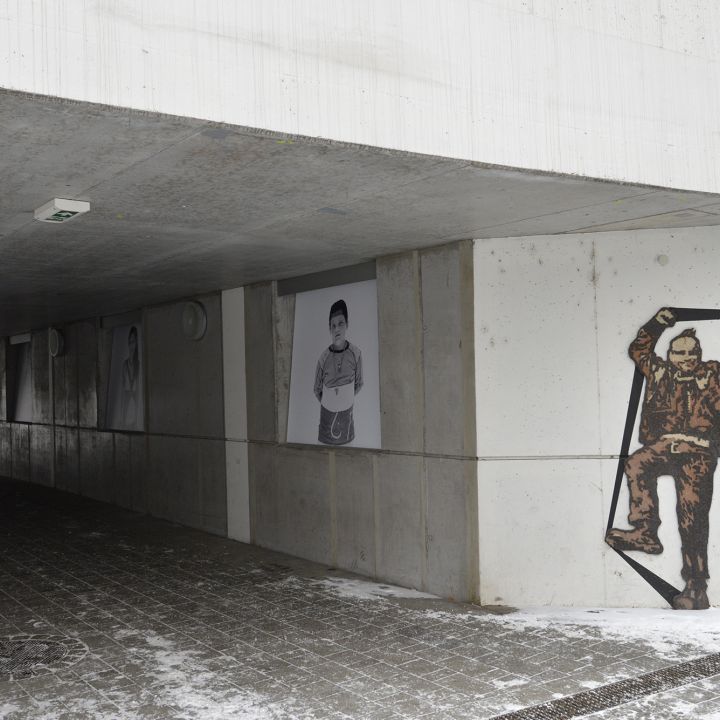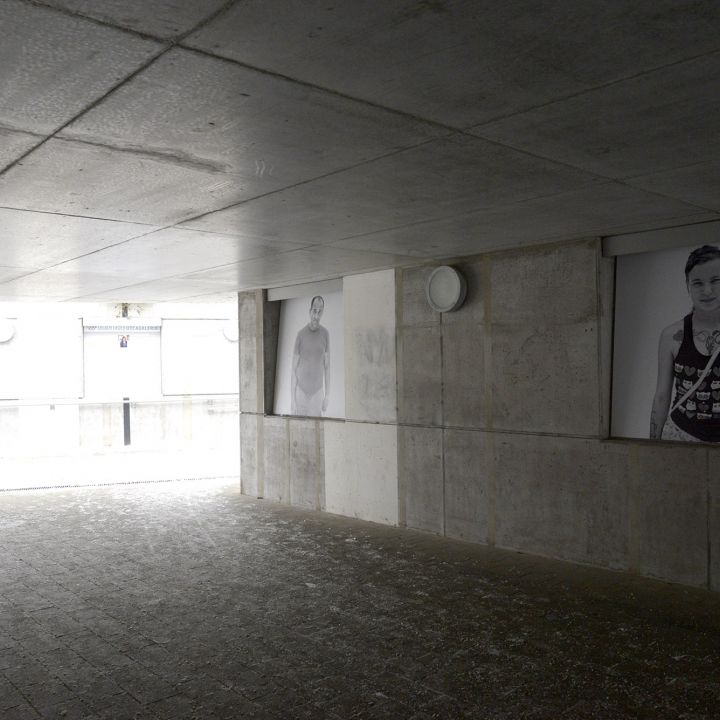Krisztina Sárdi's latest series is called You are Written on my Face. In the black and white images of the series we see everyday people standing in front of a white background: men and women, old and young, who were photographed on a Tuesday market day in the underpass of Veszprém, in an improvised photo shoot location.
Krisztina Sárdi's photographs remind us of Richard Avedon's American West series. Portraits of people engaged in everyday occupations in the American West, where - as in the present exhibition - the white background and the huge size of the images evoke astonishment magnifying the experience presented to the viewer.
Krisztina Sárdi's photos are not idealized images. They are very different from those studio works in which the environment, the setting is the result of composition, pre-planning (ID cards, birthday, wedding photos), which makes the person show a face, an idealized image of him/herself that would never be possible in reality.
This begs the question how real is what we see in the photos. Is the subjective or objective vision at the forefront of the images? What does it take for an artist to make an authentic portrait? In Alessandro Baricco's novel Mr. Gwyn, the main character decides to write portraits and for this he chooses the method of observing the person for several hours a day for nearly a month, while he 'gets to know' him/her - without a single word being spoken - and then he is able to write his/her portrait. "He watched them. For a long time. Until he saw in them the story of who they were." Because, as he writes: "... we are not characters, we are stories."
When the pictures were taken in Veszprém there was no opportunity to get to know, it was not the getting to know that provided the basis for the portraits. The photographer selected from the crowd those faces that were interesting, exciting and in some way unique. The organizing principle of the images in the series is based on three factors: chance, place and time. In a way, the selection is random, but at the same time, the set is narrowed down by the place (the underpass) and the time (the few hours that the shoot lasted).
The series is framed by the white background, which enhances the personality traits and external characteristics. At the same time the question arises: is the artist behind the camera projecting her prejudices onto the model? Is this bias prevalent in the photograph, thus hiding the true personality of the model? Does she create certain stories about the unknown person and how far does her curiosity lead her?
According to Freud everyone has an instinctive, childlike curiosity, which is particularly useful in the arts. When we sit in the tram or the metro, a similar thing happens: one of the most common activities is to measure people, to analyse external, social codes and layers, to guess or fabricate underlying life stories, human characters. People have their lives written on their faces, their appearance (clothing, posture, behaviour, etc.), which the observer tries to read. In the case of portrait photography the camera legitimises observation, curiosity, decoding. The photographer's curiosity can then be openly assumed.
But let's return for a moment to the question of reality. Avedon argued that the art of photography is not based on identity, it does not give us images, but rather feelings and opinions. There is the artist and the world and the machine that connects them. It gives the possibility to see differently. Krisztina Sárdi's photographs are not the whole truth, but they are not necessarily false. They show the photographer's "opinion" of everyday people going to the market on a Tuesday in Veszprém. Her perspective, her visual experiences, her experiences, her own visions are condensed in the pictures. In fact, she represents what she sees and how she sees it. She tries to conjure up something behind the faces, something in which she herself is also hidden. From this point of view it is irrelevant where the pictures were taken; in which city, in which subway - they could have been taken anywhere. The emphasis is on the portrait, on what these faces tell us. Whether they convey emotion, or whether they are hidden, withdrawn. The very fact that the "models" allowed themselves to be photographed is a kind of trust in the photographer, who has a responsibility in the process, because the people chosen are tools to achieve her goal. They did not know what they were undertaking, they did not have the time or the opportunity to present a face, an image or a personality that they themselves liked. Why did they do it? Because the fact of being chosen impressed them and suggested that they were special or different and, if so, worthy of being photographed. They treated it as a kind of privilege.
But there is another aspect to the interpretation: that despite or in addition to all this the photographs in the series undeniably function as an age impression, a kind of sociological, sociographic cross-section of a certain segment of contemporary society. But before we fall into the illusion of experiencing reality, let us not forget Avedon's words: 'Every photograph is authentic. None is the truth."
Szonja Dohnál

